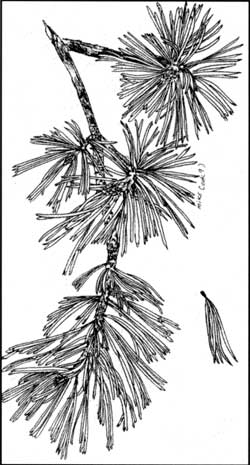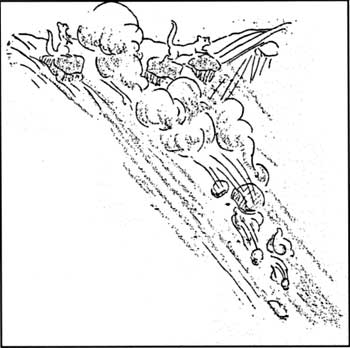Current research has identified blister rust to be the major cause of whitebark pine decline in western North America. A recent study in the Mount Thielson Wilderness approximately 15 miles north of Crater Lake unfortunately substantiated this finding. Forest Service researchers surveyed a section of the Pacific Crest Trail between 5200 and 7800 feet in elevation, where whitebark pines grow on rocky ridgetops and openings in mountain hemlock forest created by laminated root rot. The study found 46 percent of living whitebark pines were infected with blister rust, and 92 percent of these infected trees had “lethal” cankers on the trunk or on branches within six inches of the trunk. This symptom means that cankers will eventually girdle and kill the infected parts of the tree. In 42 percent of the infected trees, blister rust had already killed more than one third of the branches that make up the tree’s crown. Ten percent of the whitebark pines surveyed were dead, and 84 percent of these individuals showed evidence of blister rust infection. Oddly enough, no Ribes bushes were found along survey transects. The lack of gooseberries or currants in the survey area supports the idea that basidiospores from infected Ribes bushes at lower elevations can be carried in fog and clouds to spread blister rust infections.
 Detail of Whitebark pine. Drawing by Mike Cook, 1993. |
According to a symposium paper presented in 1989 by research ecologists Katherine Kendall and Stephen Arno, there is a close correlation between the size of whitebark pine cone crops and human encounters with grizzly bears (Ursus arctos) at Yellowstone National Park. In years of large cone crops, grizzlies spend the fall raiding squirrel middens in the subalpine forests. When smaller cone crops occur, the bears must wander in search of food and cause conflict with park visitors or staff. Since the mortality and reproductive rates of grizzly bears at Yellowstone are closely correlated with the size of whitebark pine crops, maintaining healthy stands of P. albicaulis is essential for maintaining the park’s population of grizzly bears. Although grizzlies have been absent for more than a century at Crater Lake, local populations of black bears(Ursus americanus) are sometimes forced to depend on whitebark pine nuts in order to survive the snowy winters. I confirmed this upon seeing the footprints of a black bear while collecting data from plots on Scott Bluffs. The bear scat found near the prints appeared to entirely consist of whitebark pine cones.
Katherine Kendall writes that because whitebark pine occurs at high elevation within the western United States, most of the responsibility for preserving this species falls on the managers of public land—namely the National Park Service and U.S. Forest Service. Fifteen units of the National Park System are known to include stands of whitebark pine, yet the small amount of information available concerning blister rust presence, mortality, and the extent of living whitebark pine is too often derived from casual observations or assumptions based on extrapolated evidence.
Since current research indicates that whitebark pines are declining due to blister rust and no published information was available about blister rust at Crater Lake, park managers wanted to conduct a systematic study to evaluate the health of our whitebark pines. The first set of plots sampled the pure and extensive stands of whitebark pines on Mount Scott, Cloudcap, Anderson Bluffs, and Scott Bluffs. After taking baseline data at each study plot, these points can be checked later to track the health of these trees. The study found a low rate of whitebark pine mortality (only 4 percent) and no blister rust. This is good news for Clark’s nutcrackers (Nucifraga columbiana) and other wildlife that depend on whitebark pine nuts. Other whitebark pine stands will be sampled in the future to develop a clearer picture of blister rust distribution in the park.
Like any good study, this one raises more questions than it answers. Why is blister rust present in other white pines of the Cascade Range but not on Mount Scott? Does the geographic position of Crater Lake National Park play a role in inhibiting the spread of blister rust? Are harsh conditions on Mount Scott preventing the fungus from successful reproduction? Could it be that measures to control Ribes during the late 1940s and in the 1950s are still having an effect? Further study will shed some light on some or perhaps all of these questions. Until then, we may continue to enjoy the beauty of whitebark pines around the rim of Crater Lake and in the vicinity of a peak the Klamath Indians called Tomsandi, known to newcomers as Mount Scott.
Reference
J.S. Boyce, Forest Pathology. New York: McGraw-Hill, 1961.
Susie Donahue currently resides in New Mexico but worked seasonally at Crater Lake beginning in 1993.


